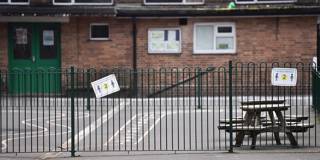While the pandemic has greatly damaged students’ learning, urgent, large-scale, and effective action by governments and education leaders could stem the tide. And establishing systems now to keep schools open in such circumstances will help protect our children and our future.
CAMBRIDGE/CHICAGO – Determining how to balance COVID-19 risks in schools around the world has been tricky. While US school leaders are currently debating whether students should be required to wear face masks, schools in Uganda recently reopened for the first time since the pandemic began. But although students in poorer countries have suffered more severe disruption, with schools closed for twice as long as in rich countries and sparse opportunities for remote learning, the current global cohort of schoolchildren will be adversely affected for decades to come. Without urgent action, the economic cost alone of school closures will be in the trillions of dollars.
Getting students back into the classroom has been critically important, but we still need immediate and targeted action to reduce learning losses. In addition, policymakers need to reflect on the tradeoffs they have made (such as keeping bars and restaurants open while shutting students out of school), account for the cost of these decisions, and establish practices and policies for managing future COVID-19 waves or the next pandemic.
During the past year, we worked with a global group of researchers to gather evidence about the pandemic’s impact on children’s education, and to identify the best ways to repair the damage. Unusually, our panel comprised researchers working on low-, middle-, and high-income countries, and included economists, psychologists, and education specialists. Despite the diversity of our expertise, the lessons we drew were starkly similar.

CAMBRIDGE/CHICAGO – Determining how to balance COVID-19 risks in schools around the world has been tricky. While US school leaders are currently debating whether students should be required to wear face masks, schools in Uganda recently reopened for the first time since the pandemic began. But although students in poorer countries have suffered more severe disruption, with schools closed for twice as long as in rich countries and sparse opportunities for remote learning, the current global cohort of schoolchildren will be adversely affected for decades to come. Without urgent action, the economic cost alone of school closures will be in the trillions of dollars.
Getting students back into the classroom has been critically important, but we still need immediate and targeted action to reduce learning losses. In addition, policymakers need to reflect on the tradeoffs they have made (such as keeping bars and restaurants open while shutting students out of school), account for the cost of these decisions, and establish practices and policies for managing future COVID-19 waves or the next pandemic.
During the past year, we worked with a global group of researchers to gather evidence about the pandemic’s impact on children’s education, and to identify the best ways to repair the damage. Unusually, our panel comprised researchers working on low-, middle-, and high-income countries, and included economists, psychologists, and education specialists. Despite the diversity of our expertise, the lessons we drew were starkly similar.